
Three months of lecture, review and physical practice and my three young students are looking at me with the blank stares of incomprehension. I’m temporarily at a loss for words. What went wrong?
As part of our long term goals in Nepal, it is our aspiration to train several Nepali born practitioners to serve in our clinics. We have partnered with a small school in Kathmandu, Rural Health Education and Service Center (RHESC) which has similar goals. This Japanese sponsored project began in the early 1980’s as a rural hospital but now finds that their facilities are landlocked within the crowded sprawl of the Kathmandu Valley. RHESC has been using acupuncture in conjunction with their rural hospital for over 30 years and now as part of their sustainability efforts, they have opened a small school. Their program has been accredited by the Council for Technical Education and Vocational Training (CTEVT) but they are hoping to expand to a full baccalaureate degree in the future. As an advisor to their Board of Directors, I have been been assisting with the development of RHESC’s curriculum, serving as a guest instructor, and we host many of their students at our clinics. This partnership with RHESC is a key that we have been looking for since we began in 2008… a pathway to legitimate licensure for our trainees.

Now, three years into this cooperation, RHESC has graduated its first batch of students. We carefully screened and selected three of their brightest students and invited them to join our project as Clinical Interns. When they arrived, I explained to them that though they had received basic training in acupuncture and were now officially “qualified” to practice in Nepal, they were not qualified to practice at our clinic. In fact, we intended to give them an additional three years of mentorship and training before releasing them to practice independently.
“I have no need of an acupuncturist.” I told them.
“I need Doctors who use acupuncture.”
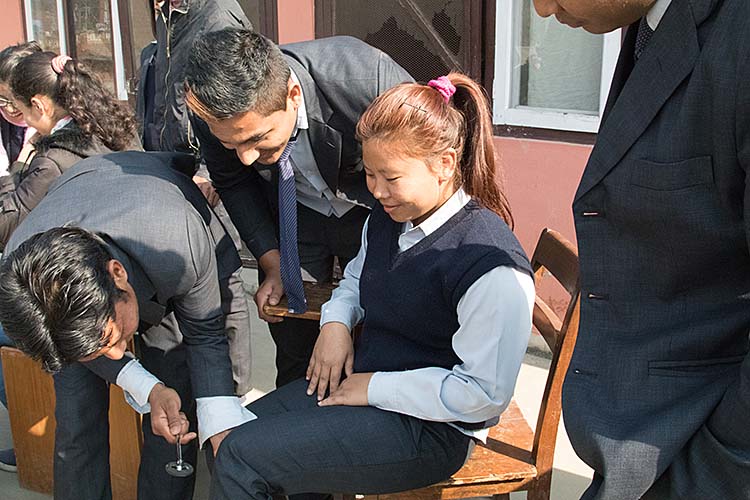
So, back to those blank stares. Diagnosis (what disease am I looking at and how do prove it), Treatment Planning (what should be done about this), and Prognosis (what will happen in the future) are the most difficult skills for a practitioner to acquire. Treatment skills (like acupuncture) are much easier to learn. Since over 65% of the cases we see in our clinic are of an orthopedic (mostly pain related) nature, I feel that this is a natural place to begin our work together. I take my students back to the beginning. Systematically reviewing basic biology, anatomy, physiology and pathology processes (inflammation, arthritis and tissue damage). We move on to looking at the very problematic knee joint. It seems like everyone in Nepal has knee pain. It makes sense, in the rural areas where we operate, most of our patients are farmers or laborers and they work really hard. It is not uncommon to see women carrying 50kg (120lbs) loads strapped to their heads over the steep and muddy hills to and from their fields. Many of them start carrying these loads at about 10-12 years of age. Somehow in human evolution, as we went from walking on all fours to walking on two feet, we developed a joint that was not really up to this task. Or as I like to say… “When I meet my maker, I have a few questions about the design”.
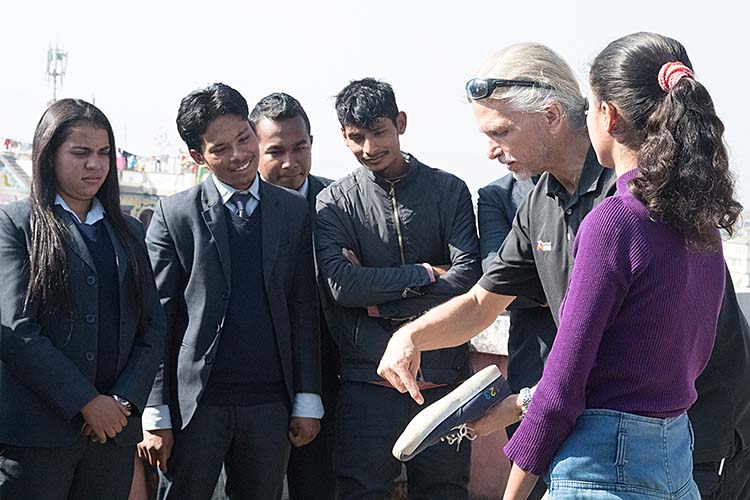
Anyway, here we are three months into this and suddenly we are at an impasse. My students seem to be stuck on the concept of cartilage and meniscus damage and we can’t seem to get beyond it. The more I try to explain it, show Youtube videos of it, and review the textbooks, the more I am confronted with those blank stares. I can’t figure out how to move forward and suddenly I’m terrified. I’ve felt this before and if you a practitioner of medicine you can probably identify this feeling when you are confronted with a patient that that just defies explanation and will not respond to treatment. Any treatment. All the labs, imaging and physical evidence point to nothing and yet here they are, in your clinic and not responding. Fear and despair creeps into your heart (am I right?).
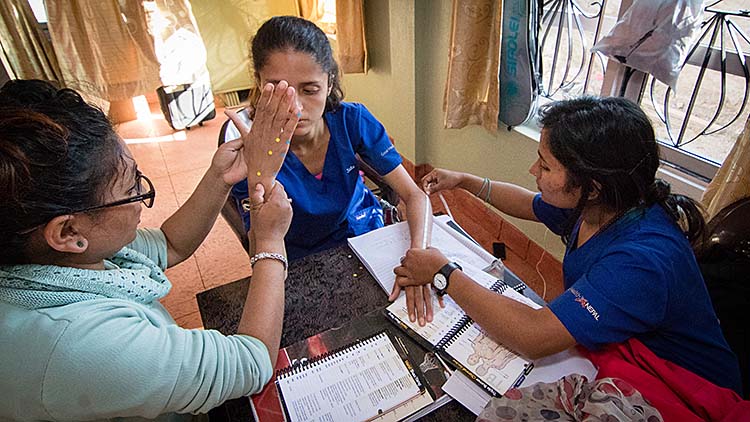
Early in the Camp, I was counseling a practitioner who was working with a young (mid-thirties) women who had suffered a severe stoke and was now paralyzed. The practitioner was trying everything he knew to help the woman but nothing was working. He was about two months and 18 visits in and nothing was happening. I could see the disappointment all over his face.
We all have the same tape playing in our mind. “There is something wrong with my skills” it says. But that is not necessarily the case.

I witnessed this in another way this year when my cohort Tsering Sherpa and I were invited to a District Health Office meeting. In this meeting every Non-Governmental Organization (NGO; also known as a non-profit) working in the health sector was to report on their activities within the district. I felt like Tsering and I had finally gotten invited to sit at the “Adults” table. We presented our work along side the likes of Unicef and the World Health Organization (WHO). Many organizations were woking on huge problems like pediatric malnutrition, vaccination programs, prenatal health and safe birthing. Surprisingly to me, many of the organizations were expressing disappointment and discouragement, that for all of their investment and resources, they had little to show in the way of results. Even in the World Health Organizations 2016 Global Report on Tuberculosis, it seemed like the battle against TB in the developing world was being lost. It is certainly not for lack of trying or viable programs. It must be something else.

When it was our turn to present, I talked about our clinical experience in Nepal and how we were noticing several things that were being overlooked by the medical community. Namely a disproportionate amount of stroke, hypertension and diabetes in the population. To my estimation, the prevalence of stroke might be 2-3 times as great as in the United States (a country well known for its poor diet and obesity problems). Also, I mentioned the prevalence of fungal infections, which I would like to attribute to the overuse of antibiotics. I concluded my talk by saying that while most of the medical community has focused on the treatment or intervention of these diseases by providing better treatment facilities, specialty camps, diagnostic labs and medications, “These are not problems we are going to medicate our way out of”. Once a person has suffered a stroke, there is little to be done except for exhaustive rehabilitation. Why aren't we asking… “how do we prevent the next stroke?”, “how would we go about doing that?” and “how would we know if we had actually prevented it?”
It is really an issue of establishing baseline. Right now, little is known about the health risks and problems in rural Nepal. No one knows exactly how many cases of diabetes are in the population because most of the cases are undiagnosed. It might be a huge problem and it might not. We don’t know.

I proposed the initiation of a baseline population study of our catchment area to look at the prevalence on non-communicable (sometimes called “lifestyle”) diseases. This study could be used as a model for other organizations to analyze their own unique baselines. This sparked a lively discussion where many of the organizations admitted that their programs often target populations and problems that are poorly defined and inadequately understood.
It must be human nature that when we see a problem, we go right to work trying to solve the problem, whether we understand the problem or not. This got me to thinking about how I have observed practitioners working in our clinic too often jumping to conclusions and moving onto treatment before really understanding the problem. More importantly, before gathering baseline observations or making defined outcome predictions. Too often they find themselves frustrated with negative or ambiguous results and are unsure as to how to proceed with their patients. Or worse, their patients lose hope and abandon treatment.
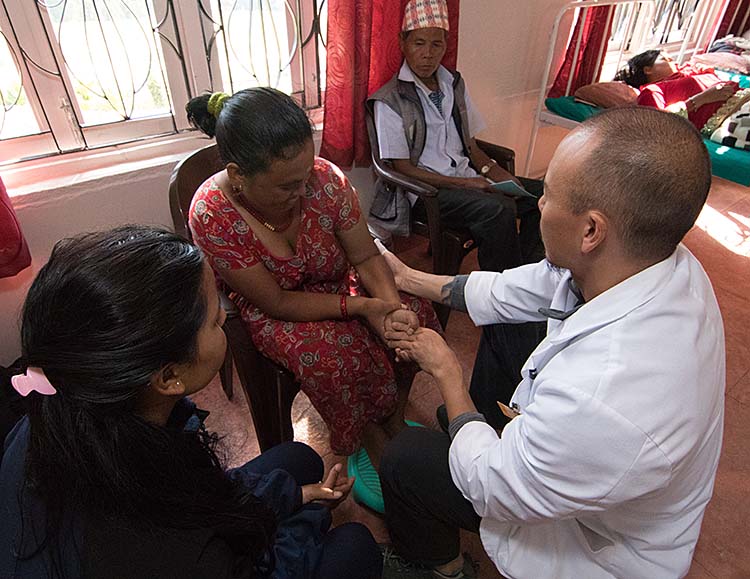
When I reviewed the case of the women with the stroke with the practitioner, we went back to baseline. What exactly did he see when she first came into our clinic? Nerve by nerve, joint by joint, muscle group by muscle group we mapped out and graded all of her baseline deficits. The good news was that the stroke had only happened a few weeks before she arrived at our clinic. The bad news was that it was a seriously bad stroke. She had absolutely no voluntary motor response in her left upper and lower limbs. The normal post stroke muscle contractures were setting in quickly. From this baseline we were able to make a better assessment of what kind of response we would be looking for and how long we would be willing to look for the response before admitting defeat.
We decided that there would be a huge difference between no voluntary response at all and some flicker of voluntary response. We were probably looking for too big of changes too quickly and we needed to tighten our observation. The patient was coming to our clinic everyday but 18 visits was probably not a lot considering the damage. We decided that 50 visits over three months (reevaluating progress every two weeks) would be a more reasonable plan. Any signs of voluntary muscle twitch during this time would be our green light to continue.
It didn’t take nearly that long.
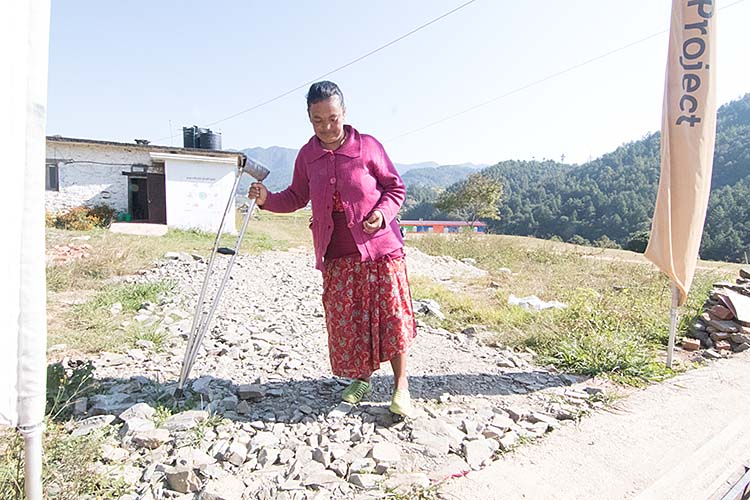
One day the practitioner simply asked her to move her hand and… it moved. I wasn’t sure who I was happier for, the patient or the practitioner! It was a big success for both of them. The woman continued to make steady progress and was soon able to walk to the clinic unassisted by her crutch. It is still a long road towards recovery for her but it was a very promising start. What I hope is that the practitioner learned that there wasn’t anything wrong with his skills. He just needed a deeper analysis of his baseline assumptions to adjust his method and expectations.
Solving the problem of the blank stares took a similar line of thinking. I could not quite wrap my brain around where we were stuck. It all seemed to be going so well.
Let’s look at the baseline. Nepali student’s have to learn everything in English. This is largely due to the fact that Nepali lacks any technical vocabulary. There is not a word in the Nepali language the differentiates a tendon from a ligament, or a muscle, or a nerve. There is just one word for all of these. As you can imagine, this can be an obstacle for Nepali students working in a second language (even though they are exceptionally bright). I needed to be absolutely sure they understood these distinctions.

My solution was to run down to the butcher shop to purchase a freshly killed water-buffalo knee joint. I brought my prize back to the classroom and we spent the rest of the day dissecting the joint. What I learned was that they were totally clear on the ligaments (though viewing the cruciate ligaments is always helpful) and tendons but were struggling to understand the concept of the cartilage and meniscus. We removed the meniscus and took turns trying to tear the rubbery tissue. Even cutting it with a surgical scissors took some serious effort. It is not a tissue that is easily damaged (it takes a lot of force). We reproduced bucket handle, parrot-beak and flap tears to understand how they interfere with the joint function. The students chiseled away at the heavy cartilage caps on femoral condyles and began to understand the slow process of osteoarthritis. Fortunately for me, the exercise paid off and somehow weeks of classes all came together into a solidified understanding. My students and I were off to a more cohesive relationship, not only to the subject matter at hand, but also to each others learning/teaching preconceptions and limitations.
Whew! Here I thought the problem was with my teaching skills! –Andrew
Author: Andrew Schlabach, MAcOM EAMP
Director, Acupuncture Relief Project
Bhimphedi, Makawanpur, Nepal











